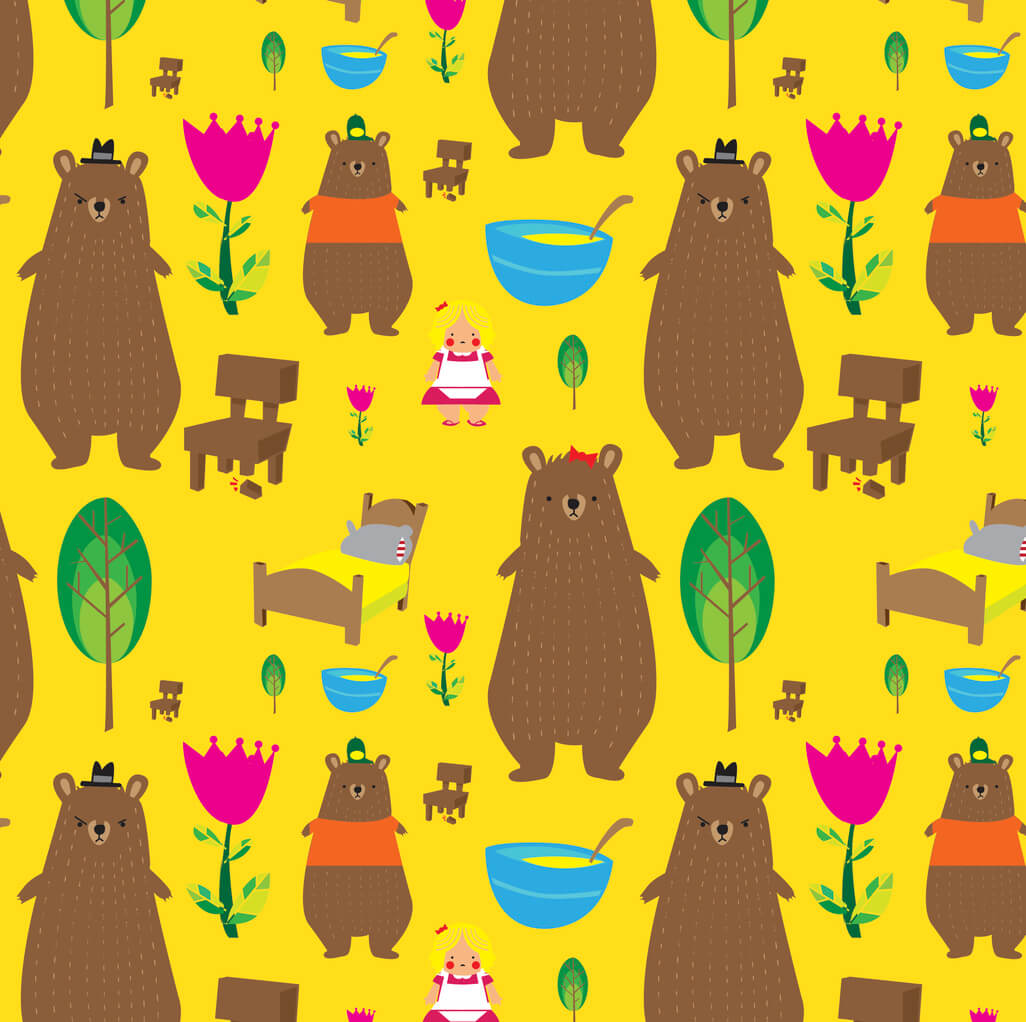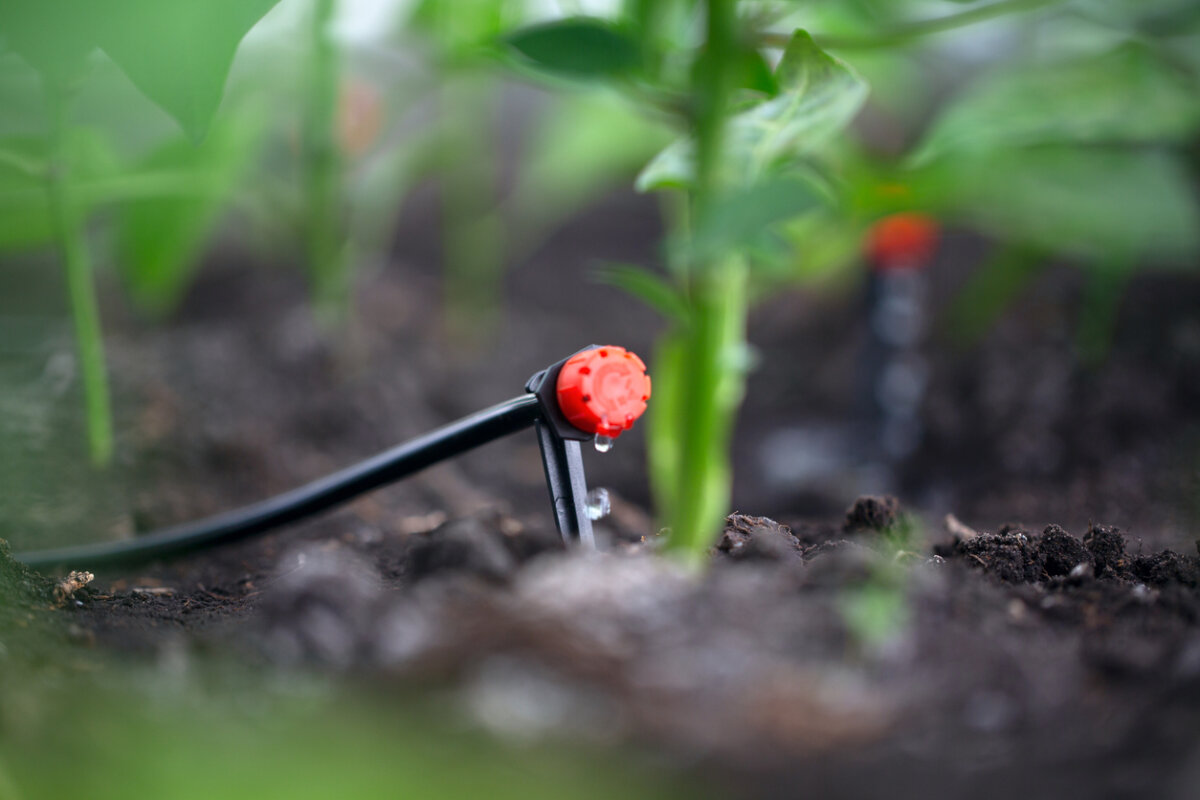
Water your lawn and garden like Goldilocks: not too much or too little water, but just right.
Think about Goldilocks and the Three Bears when you water your lawn and garden. Too little water and too much water are both bad for your plants. Water like Goldilocks: just right.
Too little water
Drought stress has a number of harmful impacts on garden plants.
Lawns
A lawn that experiences drought stress will become thin and unhealthy and may develop bare spots. This makes it vulnerable to pests such as chafer beetles and crane flies, as well as weeds and moss.
Lawns need about an inch of water a week. Read our blog post about lawn watering. We don’t advise letting your lawn go dormant in summer. Using water in the summer is more environmentally friendly than using bug and weed killers in the fall. Keeping the lawn healthy is the most important step in preventing the need for pesticides.
Trees
As our summers get hotter and drier, it is increasingly important to water your trees. In recent years we have seen more signs of drought stress in our clients’ trees. Unlike smaller landscape plants, the effects of drought stress may take a few years to appear in trees. Lack of water may eventually kill the tree.
Trees that experience drought stress have more pest problems. When plants begin to have water stress issues, they often emit destress signals that many damaging insects pick up on.
Many of our pest problems are water associated. Outbreaks and infestations of aphids, spider mites and lace bugs are all directly related to whether the plant has the moisture it needs to survive and thrive.
Drought kills trees when the plant loses more water through its leaves or needles than it can replace from the soil with its root system. Without enough water, trees cannot make food by photosynthesis.
Newly planted trees should be watered weekly. Large established trees should be watered every two or three weeks in dry periods. Read our blog post about watering trees and watch our video on how to water a young tree.
Perennials and shrubs
Regular watering is especially important for all plants in the first two or three years after you put them in the ground to help them develop deep, strong roots. While drought-tolerant plants can endure hotter, drier conditions than other plants, they still need some water in summer.
According to Piedmont Master Gardeners, look for these signs of drought and heat stress:
- “Leaves may take on a dull look initially. As stress from lack of water deepens, the leaves may curl or wilt. These signs indicate that the roots are not taking up sufficient water.
- The plant may droop or splay open in the middle. If the problem is not detected in time, the plant may not rebound even after receiving supplemental water or rain.
- Plant growth slows and may stop altogether resulting in stunted plants.
- Flower buds may not develop resulting in fewer blossoms. If they do develop, the flower size may be smaller than normal.”
Vegetable gardens
Vegetable gardens need regular water to thrive and produce a harvest. “Under drought stress, garden plants may produce small fruit, such as undersized tomatoes or melons, or they may produce no fruit at all,” said University of Minnesota Extension. “They may become tough, fibrous or bitter, as with cabbage and turnips. They may bolt, sending up a flower stalk and stopping growth, as with lettuce and spinach. Or they may wilt and die.”
Vegetable gardens will likely need water once or twice a week, depending on whether your soil is sand or clay. Soil with a thick layer of mulch will need less water.
Too much water
Too much water is also harmful to your plants. It is important to let the soil partially dry out between watering. Plants may decline and even die if their roots are too wet.
“Overwatering is one of the more common causes of plant problems,” according to Missouri Botanical Garden. The roots of a plant need water, but they also need air to breathe. In saturated soil, there is little or no oxygen available for the roots to absorb. “Overwatering, in simple terms, drowns your plant,” said Brightview.
In the Pacific Northwest, heavy clay soils are common. They are more prone to becoming waterlogged. “Roots growing in waterlogged soil may die because they cannot absorb the oxygen needed to function normally. The longer the air is cut off, the greater the root damage. The dying roots decay and cannot supply the plants with nutrients and water,” said Missouri Botanical Garden.
Plants that are stressed by being waterlogged are more vulnerable to fungal diseases, and damage caused by overwatering is frequently misdiagnosed as pest damage.
How to diagnose overwatering
Symptoms of overwatering, according to Brightview, include:
- Leaf scorch, leaf burn or brown, wilted leaves. This may occur with both too little water and too much water. “The biggest difference between the two is that too little water will result in your plant’s leaves feeling dry and crispy to the touch while too much water results in soft and limp leaves,” said Brightview.
- Water-soaked spots and blisters. When there is too much water in the cells of plant leaves, they will eventually die and burst, forming blisters and areas that look like lesions. “Once these blisters erupt, tan, brown, or white wart-like growths begin to form in their place. You will also notice indentations forming directly above the growths on the top sides of the leaves,” said Brightview.
- Stunted slow growth with yellowing leaves. The leaves may also fall off.
Water like Goldilocks: just right

Most important is to water slowly so the water penetrates deeply.
The most important tip for all watering is to water slowly so the water penetrates deeply. This encourages plants to develop deep roots, making them more drought-tolerant.
Frequent, shallow watering encourages plants to develop roots near the surface. They will tend to wilt at the first sign of hot weather. Watering deeply is key to helping plants develop resilience.
If the soil surface is dry, water may puddle or run off and not be absorbed. You need to start slowly and gradually build up to a thorough soak. Once the top few inches are moist, the water will be absorbed more easily.
Water the entire root zone area, and then let it partially dry out. The active root zone for most plants is at and even beyond the outer tips of the leaves. If you water close to a tree’s trunk, it will just make it more likely to rot.
University of Minnesota Extension has great tips for determining if you need to water:
“Check the soil conditions to find out if it is time to water.
Remove the mulch from the soil surface, and then use a spade or trowel to dig into the soil. It is fine if the top inch of soil is dry, but if the soil is dry two inches below the surface, it is time to water.
Don’t wait for rain or for the perfect time to water.
- Don’t wait for rain to water your garden. If your plants need water today, a rain shower forecast for the day after tomorrow does not help.
- If plants are wilting or showing other signs of heat stress, water as soon as possible. This may be in the heat of the afternoon or evening.
- Although watering early in the day is a better practice, do not wait to water when plants are wilting and under drought stress.”
Factors to consider
Plant canopies and sun exposure
Plants under trees or shrubs that offer shade will need less water, while those exposed to the sun, especially the hot afternoon sun, will need more water.
Property microclimates
Perhaps you have an area that is more exposed to the wind. That will dry out plants sooner.
Types and depth of soil
Sandy soils won’t hold water as long as clay soils. Soil that has been amended over the years, so it is deep and rich, will hold more water than shallow soil.
Organic mulch layers
Mulch insulates the soil, so plants need less frequent water. We recommend adding a few inches of mulch to landscape beds every year. In addition to reducing water needs, mulch also feeds the beneficial organisms in the soil, which improves plant health. And it greatly reduces weeds.
Read our blog post “Add mulch now to reduce summer water needs.”
Irrigation efficiency
The efficiency of your watering system also affects how long you need to water. Every type of sprinkler or sprinkler system has certain advantages and disadvantages when it comes to efficiency. Our video on watering systems shows some options for wands, hoses and sprinklers.
Other factors contributing to water efficiency include weather temperatures, wind and soil readiness (i.e., does the soil already have some moisture in it or is it completely bone-dry).
More info on watering
Watering playlist on YouTube
Our YouTube playlist on Watering Your Lawn and Garden has several videos on the basics of watering, watering systems, watering new plants and trees, and more.
- Watering 101: Create Strong and Healthy Plants
- A Good Start: How to Plant and Water a New Plant
- Tree Gators: How to Water a New Tree
- Water Timers: Make Your Watering Easier
- How Much Water? Rain Gauges, Sensors and Tuna Cans
- Watering Systems: Wands, Hoses and Sprinklers
- Choosing and Using Mulch
- Measuring One Inch of Water
- Natural Lawn Care: Smart Watering
Blog posts on watering
We have written a number of blog posts on watering. Here is a selection.
- How long should you water?
- How to save water this summer
- Lawn and landscape watering: 8 quick tips
- Why you need to water your landscape
Other resources
- The Saving Water Partnership has loads of good information on watering.
- Seattle Public Utilities has a guide on Smart Watering.
- Swanson’s Nursery has a good article on best watering practices.
